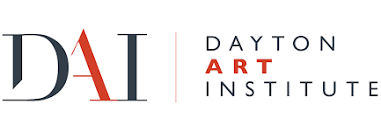Anton Raphael Mengs
German, 1728 - 1779
Mengs spent much of his career in Italy, where he was first taken in 1740–4 by his father, the Dresden court painter Ismael Mengs 1688–1764). On his return to Dresden he occupied himself with portraits, a genre in which he excelled throughout his career (his self-portrait of 1773–4 in the Uffizi, Florence, is particularly fine). In 1750 a commission for an Ascension for the Hofkirche provided an excuse for a research trip to Italy to study the works of Raphael and Correggio. The two formative events of this journey were his meeting in Rome in 1755 with the antiquary Johann Joachim Winckelmann (of whom he painted a notable portrait in 1761; New York, Met. Mus.) and the commission in 1759 from Cardinal Albani to paint a ceiling fresco of Parnassus with Apollo and the Muses for his villa on the outskirts of the city. This work, which benefited from Mengs's contact in Naples with Antique paintings excavated at Herculaneum, was a consciously reformist one inspired by the classicizing ideals of Winckelmann. The illusionism and dynamic composition characteristic of Roman Baroque ceilings was entirely rejected in favour of a stable grouping of individual figures in a shallow setting. All was designed to emphasize not that the room opens onto mythic but contiguous realms, but that the scene is a painted representation. Neither the insipid colouring nor the androgynous figures help to give the fresco presence, but it remains a seminal work in the development of Neoclassicism. Mengs never again attempted this degree of purism in his large-scale decorative works, though he did continue to explore this path in some of his easel paintings, such as The Meeting of Octavian and Cleopatra (1760–1; Stourhead, Wilts.). In those frescoes that he executed for the Palacio Real in Madrid, where he and Tiepolo were invited to work by Charles III in 1761, he was obliged to respond to the more conservative expectations of the Spanish court. For The Triumph of Aurora (1762–5) and The Apotheosis of Hercules (1762–9 and 1775) Mengs drew inspiration from the Carracci and the more classicizing painters of the early Baroque. Although the results are undoubtedly impressive, the contrast with the exuberance of Tiepolo's neighbouring decorations is piquant.
The latter part of Mengs's career was overshadowed by ill health brought on by overwork. He left Madrid for Rome in 1769 and did not return until 1774, by which time his powers were seriously weakened. Two years later he returned to Italy for good, leaving unfinished his ceiling for the court theatre at Aranjuez. His earlier involvement in attempts to reform the Academia de S. Fernando in Madrid had led him to write two theoretical texts, continuing an activity begun in the 1760s with his handbook for painters—Gedanken über die Schönheit und über den Geschmack in der Malery (Thoughts on Beauty and Taste in Painting) (1762)—which he pursued also in retirement.
Jordan, Marc. "Mengs, Anton Raphael." In The Oxford Companion to Western Art, edited by Hugh Brigstocke. Oxford Art Online, http://www.oxfordartonline.com.proxy.lib.fsu.edu/subscriber/article/opr/t118/e1717 (accessed April 27, 2012).
Person TypeIndividual
Italian, 1692 - 1770














